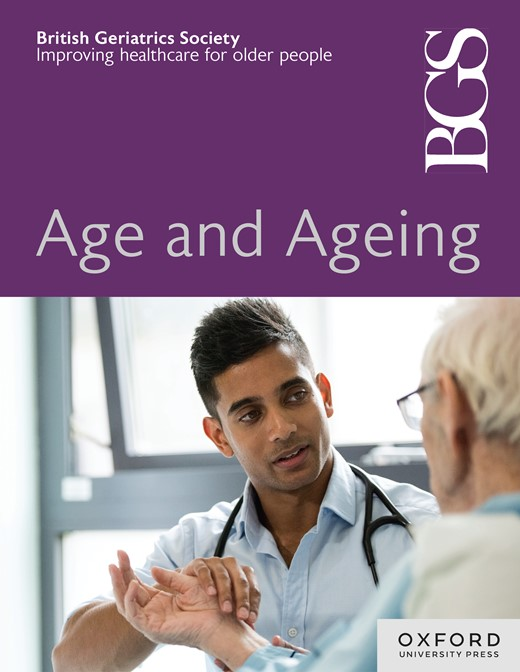Cost-effectiveness of adopting a postoperative delirium risk prediction tool with nonpharmacological delirium prevention interventions for surgical patients
IF 6
2区 医学
Q1 GERIATRICS & GERONTOLOGY
引用次数: 0
Abstract
Background Postoperative delirium (POD) arises among older surgical patients. Screening followed by prevention efforts are recommended. A risk prediction tool called PIPRA plus has been developed, yet its performance and whether adoption into health services is cost-effective are unknown. Objective To estimate the expected change to ‘total costs’ and ‘health benefits’ measured by quality adjusted life years (QALYs) from a decision to adopt PIPRA plus for screening purpose to find at-risk individuals who are then offered nonpharmacological interventions to reduce risks of POD. Design Cost-effectiveness modelling study that draws on a range of relevant data sources. Setting Swiss healthcare system. Subjects Surgical inpatients aged 60 or older, excluding cardiac and intracranial surgeries. Methods A decision tree model was used to capture the events likely to impact on cost and health outcomes. Information was harvested from a prospective before–after study done in Switzerland and augmented with other data. Probabilistic sensitivity analysis was undertaken to reveal the probability that adoption was cost-effective against a stated maximum willingness to pay threshold for decision-making in Switzerland. Results Patients in both phases of the study were similar. Costs were lower by 2898 CHF (SD 1050) per patient with the adoption of the risk screening tool and there was a modest gain to health benefits of 0.01 QALY (SD 0.026). There was a 99.7% probability that adoption would be cost-saving and 91% probability that adoption would be cost-effective. Conclusions We provide early-stage evidence that a decision to adopt the risk screening tool and offer risk-reducing interventions could be cost-effective.手术患者采用术后谵妄风险预测工具与非药物性谵妄预防干预的成本-效果
背景术后谵妄(POD)多发于老年外科患者。建议进行筛查,然后采取预防措施。已经开发了一种称为PIPRA plus的风险预测工具,但其性能以及在卫生服务中采用是否具有成本效益尚不得而知。目的评估采用PIPRA plus进行筛查的决定对“总成本”和“健康效益”的预期变化,以质量调整生命年(QALYs)衡量,以发现有风险的个体,然后提供非药物干预以降低POD的风险。设计利用一系列相关数据源的成本效益建模研究。设置瑞士的医疗保健系统。对象60岁及以上的住院外科患者,不包括心脏和颅内手术。方法采用决策树模型捕捉可能影响成本和健康结果的事件。这些信息是在瑞士进行的一项前瞻性前后对比研究中获得的,并辅以其他数据。进行了概率敏感性分析,以揭示采用与瑞士规定的最大支付意愿阈值相比具有成本效益的可能性。结果两期患者相似。采用风险筛查工具后,每位患者的成本降低了2898瑞士法郎(SD 1050),健康获益为0.01 QALY (SD 0.026)。有99.7%的可能性采用该方法可以节省成本,91%的可能性采用该方法具有成本效益。结论:我们提供的早期证据表明,决定采用风险筛查工具并提供降低风险的干预措施可能具有成本效益。
本文章由计算机程序翻译,如有差异,请以英文原文为准。
求助全文
约1分钟内获得全文
求助全文
来源期刊

Age and ageing
医学-老年医学
CiteScore
9.20
自引率
6.00%
发文量
796
审稿时长
4-8 weeks
期刊介绍:
Age and Ageing is an international journal publishing refereed original articles and commissioned reviews on geriatric medicine and gerontology. Its range includes research on ageing and clinical, epidemiological, and psychological aspects of later life.
 求助内容:
求助内容: 应助结果提醒方式:
应助结果提醒方式:


